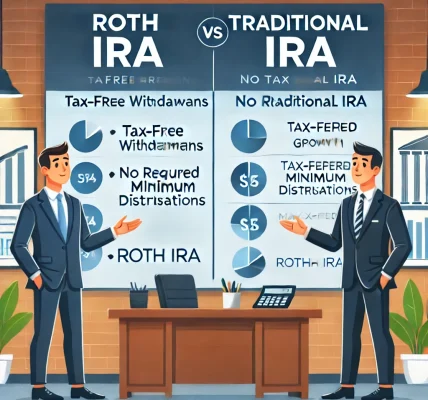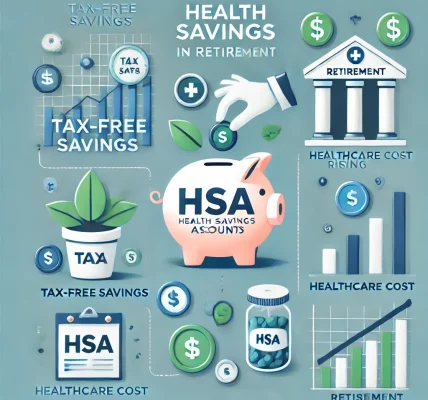Introduction
Retirement planning is an essential step in securing a financially stable and comfortable future. While both men and women need to plan for retirement, women often face unique challenges, including longer life expectancy, career breaks, and the gender pay gap. As a result, women must take proactive steps to ensure they can retire comfortably before 50, or at least be financially stable during their golden years. In this comprehensive guide, we will discuss key strategies for retirement planning, common challenges faced by women, and practical steps to achieve financial independence before 50.
Understanding the Unique Retirement Challenges for Women
Women often encounter distinct financial hurdles when planning for retirement. Here are some key factors to consider:
1. Longer Life Expectancy
Women tend to live longer than men, which means they require more savings to support their extended retirement years. According to studies, the average life expectancy for women is around 81 years, while for men, it is 76 years.
2. Career Breaks & Lower Lifetime Earnings
Women are more likely to take career breaks for caregiving responsibilities, whether for children, elderly parents, or family members. These breaks can lead to reduced earnings and gaps in retirement savings, impacting their financial future.
3. Gender Pay Gap
Women, on average, earn less than men for the same work, which can result in lower lifetime earnings, affecting their retirement savings. This pay gap means lower contributions to retirement plans and ultimately, smaller retirement funds.
4. Longer Life Expectancy
On average, women tend to live longer than men, meaning they need more savings to sustain a comfortable lifestyle during retirement. Longevity risk is a major factor to consider when planning for early retirement.
Step-by-Step Guide to Early Retirement Planning for Women
Step 1: Start Saving Early
The sooner you begin saving, the more you can take advantage of compound interest. Start by setting aside at least 15-20% of your income for retirement. The earlier you start, the more time your money has to grow.
Step 1: Set Clear Retirement Goals
Before starting your early retirement planning journey, it is essential to define your goals. Consider the following questions:
- At what age do you want to retire?
- What lifestyle do you envision after retirement?
- Where do you want to live?
- How much money do you estimate you will need each year in retirement?
By setting clear goals, you can determine the amount you need to save and invest to achieve early retirement.
Step 2: Create a Budget and Savings Plan
To ensure financial stability in retirement, it’s important to:
- Track your expenses and cut down unnecessary costs.
- Set realistic savings targets.
- Follow a strict budget that prioritizes savings.
1. Save Aggressively
To retire before 50, aim to save at least 30-50% of your income. Consider automating savings and maximizing retirement accounts such as 401(k)s, IRAs, and employer-sponsored pension plans.
2. Build an Emergency Fund
A well-padded emergency fund ensures that unexpected expenses do not deplete your savings. Aim for at least 6-12 months’ worth of living expenses in a high-yield savings account.
Invest Wisely for Long-Term Wealth
1. Diversify Your Investments
Relying on a single investment source can be risky. Spread your investments across different asset classes such as:
- Stock Market: Investing in stocks and index funds can provide high returns over time.
- Bonds: Bonds offer stability and are a great option for risk-averse investors.
- Real Estate: Buying rental properties can provide passive income.
- Retirement Accounts: Utilize 401(k), IRA, and other pension plans for tax benefits.
- Mutual Funds and ETFs: These provide a diversified investment portfolio that grows over time.
Step 3: Maximize Tax Benefits
Understanding tax benefits can help you save more money in the long run. Here are some tips:
- Contribute to Retirement Accounts like 401(k), IRA, or Roth IRA for tax-advantaged growth.
- Consider Health Savings Accounts (HSAs) as a tax-efficient way to cover healthcare costs.
- Take advantage of employer matches to maximize contributions to retirement funds.
- Understand the tax implications of Social Security benefits and plan withdrawals wisely.
Step 4: Reduce Debt Before Retirement
Minimizing debt is crucial for a comfortable early retirement. Focus on the following:
- Pay off high-interest debts (credit cards, personal loans, etc.).
- Plan for mortgage freedom before retiring, if possible.
- Reduce unnecessary expenses and reallocate those funds into your savings.
Investment Strategies for Early Retirement
To build a solid retirement corpus, investing smartly is key. Consider these strategies:
1. Diversify Your Investments
Avoid putting all your money in one asset. Diversify your investments across different asset classes like:
- Stocks and Mutual Funds: Higher return potential over the long run.
- Bonds and Fixed Deposits: For lower risk and stable returns.
- Real Estate Investments: Rental properties and REITs for passive income.
- Gold & Commodities: Hedge against inflation.
2. Take Advantage of Tax-Advantaged Accounts
Explore government-backed schemes that provide tax benefits, such as:
- 401(k) and IRAs (Traditional and Roth)
- Public Provident Fund (PPF)
- Pension Plans with Tax Benefits
3. Create Multiple Income Streams
Self-employed individuals must create multiple income streams, such as:
- Dividend-paying stocks and bonds
- Annuities for a steady income after retirement
- Side businesses or freelancing
Investment Strategies for Early Retirement
1. Start Early and Invest Regularly
The earlier you start saving, the more time your investments have to grow. The power of compound interest works best when you start investing early.
2. Increase Contributions Over Time
As your income increases, consider raising your contributions. This will accelerate your retirement savings growth and help you achieve financial freedom before 50.
3. Diversify Your Investments
Do not rely on a single source of income. Instead, diversify your portfolio to include:
- Stocks
- Bonds
- Mutual funds
- Real estate
- Annuities
- Pension plans
Diversification helps mitigate risks and ensures your money continues growing despite market fluctuations.
4. Focus on Tax-Efficient Investments
Minimize your tax liability by investing in tax-advantaged accounts such as:
- Roth IRAs and Roth 401(k)s (Tax-free withdrawals in retirement)
- Traditional IRAs and 401(k) Plans (Tax-deferred growth)
- Health Savings Accounts (HSA) (Tax-free for medical expenses)
- Annuities (Tax-deferred income after retirement)
2. Employer-Sponsored Retirement Plans
If your employer offers a 401(k) plan, it is one of the easiest ways to save for retirement. Benefits include:
- Automatic Contributions: Deductions are made directly from your salary.
- Employer Match: Some employers offer to match a percentage of your contributions, which helps boost your savings.
- Tax Benefits: Contributions reduce taxable income and allow your investments to grow tax-free.
Creating a Realistic Retirement Budget
It’s crucial to estimate how much money you will need after retiring. Consider these:
- Daily Expenses: Food, housing, utilities, and other necessities.
- Healthcare Costs: As you age, medical expenses might increase. Consider investing in health insurance and long-term care policies.
- Leisure and Travel Costs: If you plan to travel or pick up new hobbies in retirement, budget accordingly.
Having a clear budget will help you determine your savings target and adjust your investments accordingly.
How Much Should You Save?
Experts suggest that retirees need at least 70-80% of their pre-retirement income to maintain their standard of living. The amount you need depends on your lifestyle, expenses, and inflation.
Use the 25x rule to estimate your required retirement corpus. This rule states that you should save 25 times your annual expenses to ensure a sustainable withdrawal rate throughout your retirement.
The Importance of Starting Early
The earlier you start saving, the more time your money has to grow due to compound interest. For instance, saving $500 per month at an 8% return for 25 years can result in over $475,000. On the other hand, delaying savings can result in significantly lower retirement funds.
Regular Review and Adjustments
Retirement planning is an ongoing process. You should:
- Monitor Your Progress: Regularly review your savings, investment performance, and expenses.
- Adjust Contributions: Increase contributions as your income grows to stay on track with your retirement goals.
- Seek Professional Guidance: Consulting a financial advisor can help optimize your retirement plan based on your financial situation and goals.
Conclusion
Choosing the best retirement plan for your financial goals requires careful planning, research, and commitment. By assessing your future needs




